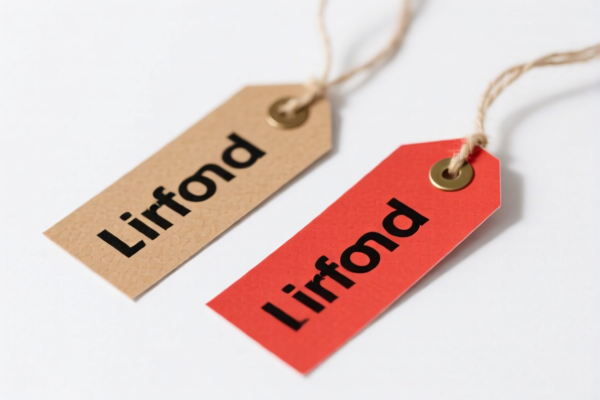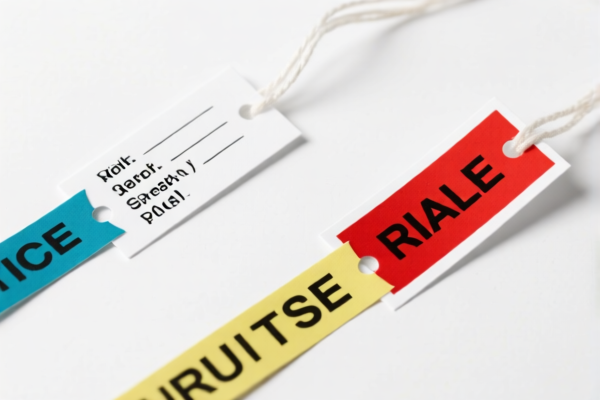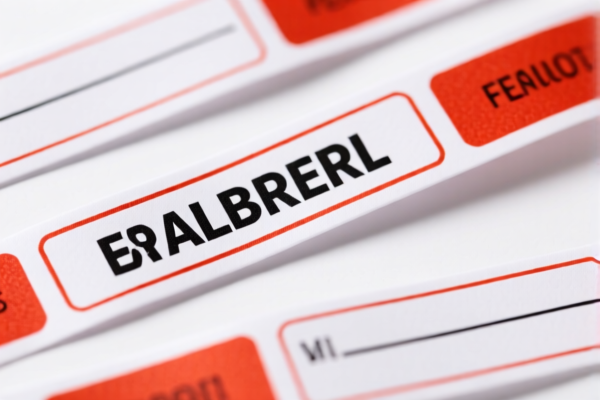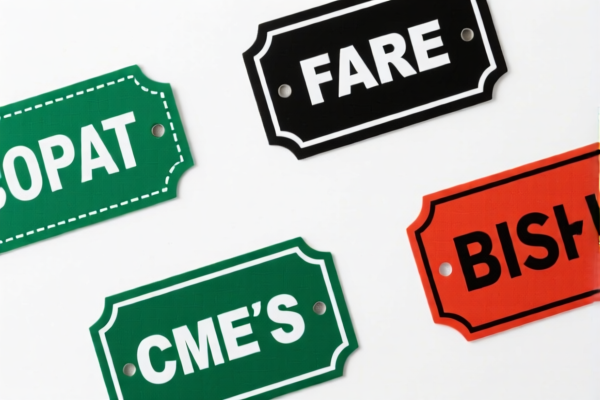| HS Code | Official Doc | Tariff Rate | Origin | Destination | Effective Date |
|---|---|---|---|---|---|
| 4908100000 | Doc | 37.5% | CN | US | 2025-05-12 |
| 4908900000 | Doc | 37.5% | CN | US | 2025-05-12 |
| 4911998000 | Doc | 37.5% | CN | US | 2025-05-12 |
| 4911996000 | Doc | 37.5% | CN | US | 2025-05-12 |
| 3919102055 | Doc | 60.8% | CN | US | 2025-05-12 |
| 3919905060 | Doc | 60.8% | CN | US | 2025-05-12 |
| 3921904010 | Doc | 34.2% | CN | US | 2025-05-12 |
| 3921905010 | Doc | 34.8% | CN | US | 2025-05-12 |




Sticky Labels
Sticky labels, also known as adhesive labels, are pieces of paper, plastic, or other material with an adhesive backing used to attach information to surfaces.
Material
- Paper: The most common material, often used for temporary labels like address labels or product identification. Paper labels are cost-effective but less durable.
- Plastic (Polypropylene, Polyester, Vinyl): Offer greater durability, resistance to water, chemicals, and temperature variations. Commonly used for outdoor applications, product packaging, or labels requiring longevity.
- Fabric: Used in specialized applications like clothing tags or laundry labels.
- Metal: Used for durable marking, identification, and branding.
Adhesive Types
- Permanent Adhesive: Designed for long-term adhesion and are difficult to remove without leaving residue. Typically acrylic-based.
- Removable Adhesive: Allow for clean removal without damaging the surface. Often rubber-based.
- Repositionable Adhesive: Allow for multiple applications and removals, ideal for temporary notes or organization.
- Specialty Adhesives: Designed for specific surfaces or conditions, such as high-temperature resistance or freezer-grade adhesion.
Purpose
- Identification & Organization: Labeling files, containers, shelves, and other items for easy identification.
- Product Labeling: Providing information about products, including ingredients, instructions, and branding.
- Shipping & Addressing: Used for mailing addresses, barcodes, and shipping information.
- Marketing & Promotion: Used for branding, promotions, and product information.
- Warning & Safety: Displaying warnings, safety instructions, or hazard information.
Function
Sticky labels function by utilizing an adhesive layer to bond to a surface. The adhesive is typically applied to the back of a substrate (paper, plastic, etc.), which features a release liner to protect the adhesive until application. Upon removal of the release liner, the adhesive is exposed and can be pressed onto the desired surface.
Usage Scenarios
- Home Organization: Labeling pantry items, storage bins, and files.
- Office Use: Labeling files, folders, and equipment.
- Retail & Packaging: Product labeling, pricing, and branding.
- Shipping & Logistics: Addressing packages and tracking information.
- Manufacturing & Industrial: Identifying parts, products, and equipment.
- Healthcare: Patient identification, specimen labeling, and medication labeling.
Common Types
- Address Labels: Pre-printed or blank labels for mailing addresses.
- Product Labels: Labels with product information, branding, and barcodes.
- Shipping Labels: Labels for tracking packages and providing shipping information.
- Barcode Labels: Labels with barcodes for scanning and inventory management.
- Price Labels: Labels for displaying prices and promotions.
- Warning Labels: Labels with safety instructions and hazard information.
- Tamper-Evident Labels: Labels that show evidence of tampering.
- Roll Labels: Labels pre-printed on rolls for automated application.
- Sheet Labels: Labels pre-printed on sheets for manual application.
- Blank Labels: Labels without pre-printing for custom designs.
Sticky labels can generally be categorized based on their material (plastic film, paper, etc.), adhesive properties, and application scenarios. Based on the provided information, several HS codes may be relevant.
- 4908.10.0000: This HS code covers Transfers (decalcomanias), vitrifiable. This could apply if the sticky labels are designed for high-temperature applications or require a durable, vitrified finish. The total tax rate is 37.5%, comprised of a 0.0% base tariff and a 7.5% additional tariff, increasing to 30% after April 2, 2025.
- 4908.90.0000: This HS code covers Transfers (decalcomanias): Other. If the sticky labels do not fall under the 'vitrifiable' category, this code may be applicable. The total tax rate is also 37.5%, with a 0.0% base tariff and a 7.5% additional tariff, increasing to 30% after April 2, 2025.
- 3919.10.2055: This HS code covers Self-adhesive plates, sheets, film, foil, tape, strip and other flat shapes, of plastics, whether or not in rolls: In rolls of a width not exceeding 20 cm: Other Other. This is relevant if the sticky labels are made of plastic film and supplied in rolls with a width of 20 cm or less. The total tax rate is 60.8%, consisting of a 5.8% base tariff and a 25.0% additional tariff, increasing to 30% after April 2, 2025.
- 3919.90.5060: This HS code covers Self-adhesive plates, sheets, film, foil, tape, strip and other flat shapes, of plastics, whether or not in rolls: Other: Other Other. This applies to self-adhesive labels made of plastic, not specifically in rolls or exceeding 20cm in width. The total tax rate is 60.8%, with a 5.8% base tariff and a 25.0% additional tariff, increasing to 30% after April 2, 2025.
According to the provided reference material, the HS code options related to 'sticky labels' are limited, with only the following 4 found.
Customer Reviews
No reviews yet.